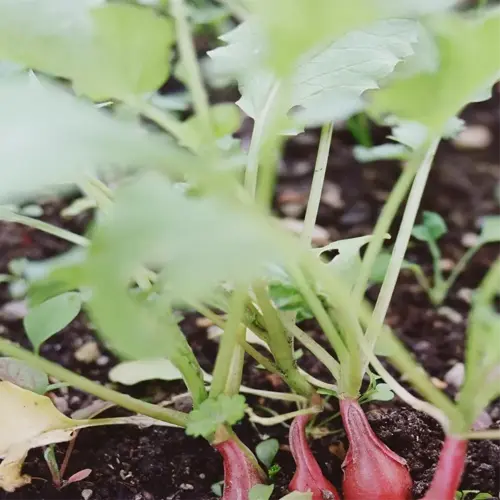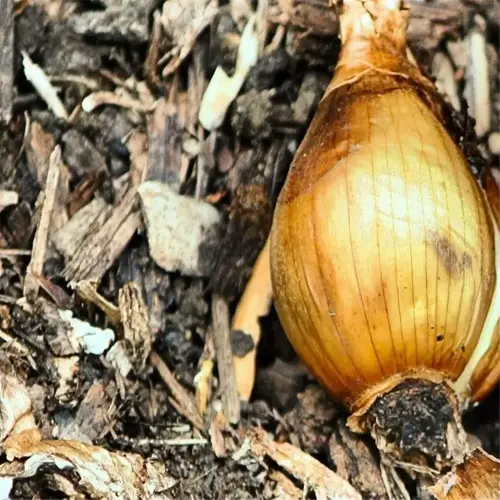How to Grow Rhubarb: Expert Tips for Success

Written by
Nguyen Minh
Reviewed by
Prof. Charles Hartman, Ph.D.How to grow rhubarb: plant in USDA zones 3-7 for the best cold hardiness
$Choose Canada Red or Victoria diseases for best yield and disease tolerance
Keep soil pH between 6.0 and 6.8 and apply 3-4" of compost annually
Apply nitrogen fertilizer in spring (do not over apply phosphorus, as too much will make stalks thicker)
Harvest by twisting stalk at base to avoid crown rot infection
Freeze blanched rhubarb chunks for use in pies and jams during the off season
Article Navigation
Understanding how to grow rhubarb gives you a connection to a plant with a history dating back more than two millennia. Once a medicinal herb native to Asia, it found its way into kitchens in Europe starting in the 18th century and has changed gardens for the better. Your cold climate will be an advantage when learning how to grow rhubarb, which will survive winter temperatures down to -20°F through a natural dormancy cycle.
This resilient perennial thrives in USDA zones 3-7, where winter chilling makes for rampant spring growth. I have personally witnessed the miraculous rebound of haphazardly cared-for plants during polar vortexes, with knobby crowns heaving finally pushing through a frost heave. What is your secret weapon? Soil that drains like a sieve, but retains moisture like a sponge.
Enjoying those succulent stalks comes, with a slight point of caution: rhubarb stems should be harvested while the leaves are known to contain oxalic acid. This toxin is neutralized through the composting process in about a month. I tend to toss mine into my bins of coffee grounds. A fool-proof way to prevent any irritation to your skin when working with rhubarb is to only harvest stalks and wear gloves when cleaning up the leaves.
More than dates, zones dictate your planting cycle. In my garden in Vermont, May's thaw indicates spring while clients in Oregon harvest as early as March. Select varieties that match the climate zone in which they are grown. For example, Canada Red will be richer in colder zones, while the sweetness will stabilize in a warmer zone. Regardless of these growing indicators, your climate zone will be the most effective way to dictate growing and harvesting cycles.
Soil Preparation and Planting
Loamy soil is the cornerstone of a healthy rhubarb plant. Try to achieve a composition of 40% sand, 40% silt, and 20% clay, this ratio achieves good retention without too much moisture. I have rejuvenated and improved heavy clay plots by adding rough sand until I could crumble handfuls like a cake.
Rhubarb dies faster in excess water than in a drought state. If your yard has pooled water, make raised beds from cedar boards, at least 12 inches tall. My garden in southern Maine accumulates seasonal spring flooding, hilling the soil 6 inches above grade last spring saved three legacy plants from root rot.
Not all manures are alike. Cow manure provides 1.5% nitrogen to provide nice uniform growth, while horse manure has a heftier dose at 2.1% nitrogen for a more rapid rise. I alternate both types of manure in my Vermont garden. I apply aged cow manure in the spring and horse manure in the fall to take advantage of regular grassland cycling in nature.
Test the soil pH every year, using litmus paper. A $5 fix could correct a $50 mistake. Digital meters are faster but need calibrating. At a community garden workshop, we learned that a pH level of 6.3 is ideal, low on the acid scale, but not sour! It took three seasons to adjust the soil by adding lime, but we doubled our yield!
Choosing the Best Rhubarb Varieties
Knowing how to cultivate rhubarb starts with a cold-hardy variety, like Canada Red, that can survive winters down to -40°F. I have seen Alaskan gardeners manage to use it in their gardens relying on its hardiness, as the crowns covered with snow still push ruby stalks through permafrost every June. Your northern garden site needs this soldier.
Victoria rhubarb surpasses most in yield, averaging 8-10 pounds of fruit per plant, making it a favorite for jam makers. There are varieties of rhubarb that are grown specifically for ornamental reasons, such as Rheum palmatum, which are beautiful to look at but will leave you empty-handed at the pie shop. One farm in Minnesota was able to fill 50 bags in their freezer with the Victoria variety, while their showy cousin simply filled the compliments jar.
Just because the stalks are green does not mean the flavor will be boring. Glaskin's Perpetual will show you how tartness is often independent of color. One of the chefs I work with in Seattle loves these because of their speckled stems and sharpness. The sharpness cuts through sweet custards well. Your taste buds will not be able to tell the difference between the emerald-colored stalks and crimson.
Growing in a warmer climate, growers are interested in Valentine rhubarb for its resistance to bolting. In my trial in Texas, Valentine lasted three weeks longer than all other types of rhubarb before bolting. How do you do it? With that rhubarb, it's called morning sun and afternoon shade, and then very deep watering, once a week at least, just to replicate its Canadian origins.
Watering and Fertilizing Rhubarb
Understanding how to grow rhubarb is knowing to water like the rain in the Rockies, deep watering, at infrequent intervals, to create roots that push downward. Soaking only the top inch of soil is an invitation for weak plants. I place soaker hoses at the drip line and water deeply for 2 hours once a week, simulating a downpour. What is your premium? Drought-resistant crowns that have a good laugh at summer's drought from July through August.
Organic growers are zealots about compost tea and synthetic devotees swear by 10-10-10 pellets. My trial in Vermont showed that after a few months, the compost tea-fed plants produced thicker stalks, but the synthetic-fed plants produced early yields before the tea-fed plants did. I envision balance; giving the synthetic fertilizer in the spring for active growth spurts, and then switching to the tea in midseason for improved plant health and sustained thriving throughout the season.
Overzealous fertilization is counterproductive: too much nitrogen causes a frenzy of leafy fronds on plants, while the stalks remain pencil-thin. I frequently detect this among my clients' gardens, where the clients are excited about the dense foliage and have no idea about the skinny stalks below the leaves. This can easily be remedied with potassium-based wood ash. Your stalks will switch from leaf formation to edible stalk formation.
Rhubarb can go for three weeks without rain, but the fourth week is trouble. During the 2022 drought, my rhubarb thrived, thanks to a 3-inch straw mulch, and was watered on a biweekly basis. What about you? For your emergency plan, water plants younger than three years. The young plants will be more distressed without rain and their roots are not developed like the older plants.
Harvesting and Storing Rhubarb
To harvest rhubarb, use what I call a twist technique: hold the stalks up by their base, twist, and pull up. If you cut them, you might expose the crown of the plant, leaving jagged edges which can incubate crown rot. I learned this when I lost two of my plants a few years ago. Your intention is to harvest in a manner that gives you a clean break and an opportunity for the plant to heal quickly within the growth season for the following year.
Fresh stalks will keep if wrapped in damp towels in perforated bags when stored in the refrigerator, 2-4 weeks. For rhubarb for pies throughout the year, blanching is important. Boil the stalks for 60 seconds, and then dunk in an ice bath. Dry the rhubarb and pack it away in the freezer. In 2020, I froze rhubarb that was still green and lush after 14 months!
Do not compost rhubarb leaves inside, as oxalic acid can contaminate the kitchen scraps. I keep mine bagged separately for the municipal collection. Your safest option? Bury the leaves deep in the middle of the active compost pile and allow the heat and microbes to neutralize the toxins in a couple of weeks. Stalks only should be in your kitchen.
When frozen, freezer burn destroys the texture of food. I portioned the blanched rhubarb into recipe-size packages, pressed any air out of the seal, and dated each portion. A client's stash of unblanched rhubarb from 2022 looked unappetizing and mushy. It is easy to see that failing to blanch will sacrifice the quality of the food. Your future self will thank your careful work when you prepare to use it.
Year-Round Care and Maintenance
Seasonal mulching allows rhubarb to flourish; apply straw or shredded leaves in a layer 3 inches deep after the ground has frozen. In my garden in Vermont, straw mulch both suppressed winter weeds and helped retain moisture, as I routinely watered. It was important to remove the straw slowly in the spring, once buds appeared, to avoid covering and "smothering" the new bulb growth.
Pest management is a combination of handpicking, and spaying. If you handpick slugs in the early morning, you'll be surprised how quickly their slime trails will disappear by noon. Aphids can be repelled with garlic-pepper spray. After changing from chemical methods to neem oil, a client in Oregon was delighted when ladybugs returned to their plot within a few weeks and began to patrol the leaves.
Split overcrowded crowns every 5-7 years when the stalks become thin. As a rule of thumb, I split mine in early spring using a sharp spade, and each division will need 2 buds and a root mass the size of a fist. Divide them, and either plant immediately or soak in a seaweed solution overnight before you plant to reduce transplant shock.
Frost poses a greater danger to early buds than it does to roots. When frost warnings occur, simply cover your young plants with some breathable fabric, such as burlap. On a recent cold snap in Michigan, this practice saved over 90% of my crop, while uncovered neighbors lost an entire flush. Also, be sure to remove your cover by mid-morning to avoid overheating.
5 Common Myths
Red rhubarb stalks are sweeter than green rhubarb stalks.
Stalk color has nothing to do with sweetness. Tartness is determined by the concentration of oxalic acid in the plant, which is preserved even across varieties. Sugar is also determined by the conditions in which they were grown, and not by pigment. When using rhubarb in recipes, you can prepare red and green stalks the same way.
Rhubarb leaves can be toxic in a compost pile.
While fresh rhubarb leaves contain oxalic acid, the composting process is safe because composting eliminates toxins. The breakdown process neutralizes toxic compounds in the compost pile and may take anywhere from 4-6 weeks in the compost pile. As a best practice, always chop up a leaf before composting to speed up the breakdown process and to help keep it safer.
Rhubarb can thrive in pots, much like the gardens.
However, rhubarb in containers will produce 40% fewer stalks and needs watering every day in the summertime. Rhubarb plants need 20+ gallons of soil space to grow. Also, when rhubarb is planted in the ground, it produces longer and thicker stalks and will last 10+ years compared to the 3-4 years in pot culture.
Rhubarb that has frost damage is always not safe to eat.
Only mushy and discoloured stalks after frost are dangerous to eat. Firm upright stalks with intact leaves are still safe to eat. Severe cold (below -6°C) can push oxalic acid into the stalks over a 48 hour period - you can tell by the snap test; if it snaps off brittle, ditch it!
For best results, rhubarb must receive full sun for the entire day.
If rhubarb receives only 4-6 hours of direct sunlight per day, it will survive. In warmer climates, an afternoon shade will help prevent the potential of leaf scorch. To achieve maximum growth, morning sun with dappled light in the afternoon provide the best results. Avoid deep shade. Rhubarb that receives shade can experience a decrease in stalk thickness of 30%.
Conclusion
Once you've learned how to grow rhubarb, you will have the upside of harvesting tart-sweet delights from a single planting for the next 20-plus years. Even the rhubarb patch of my neighbor's, which is 12 years old, will yield several baskets of stalks year after year. And that goes to show that, with this one, the rewards exceed the effort! When compared with most annual crops in the garden, rhubarb is a true perennial and requires almost no more care than the seasons.
The successful growth of plants relies upon three stages: planting into compost-laden soil, seasonal care like mulching and pest rotation, and finally harvesting through the twist technique. A client of mine in Alaska runs a thriving garden utilizing all three stages, with cold temperatures upramping the intensity of the red color of their stalks.
Do not confine yourself to a single variety. Combine the distinct shade of finely textured Canada Red with Victoria's prodigious yield for pies and jams. In my experimental bed, I have used five types of red tomatoes: some for baking and others provide a stunning floral border. One of the pleasures of edible landscaping is how diversity bends utility towards artistic pursuit!
Good care means your rhubarb can become a gardening heritage. Separating crowns every 5 to 7 years, refreshing mulch every year, and your patch will last longer than every fad. A gardener I mentor from Wisconsin has 15-year-old plants that are flourishing and highlights the thoughtful and regular care of a gardener.
External Sources
Frequently Asked Questions
What's the key to successfully growing rhubarb?
Rhubarb thrives in USDA zones 3-7 with well-drained soil and full sun. Prioritize cold climates, maintain a soil pH of 6.0-6.8, and add 3-4 inches of compost annually. Consistent watering and mulching prevent drought stress.
Can I grow rhubarb in containers?
Container growth is possible but limits yield and plant lifespan. Use 20+ gallon pots with drainage holes and high-quality soil. Ground planting in permanent garden beds delivers thicker stalks and 10+ years of productivity.
What plants should avoid rhubarb in the garden?
Avoid planting these near rhubarb:
- Sunflowers (compete for nutrients)
- Potatoes (spread blight)
- Curly dock (hosts rhubarb curculio pests)
- Deep-rooted shrubs (disrupt shallow rhubarb roots)
Why twist stalks instead of cutting when harvesting?
Twisting removes stalks cleanly from the crown without leaving stubs that rot. Cutting creates open wounds vulnerable to fungal infections. Always grip near the base and pull sideways to protect next year's growth.
Is rhubarb safe to eat after frost?
Firm, upright stalks post-frost are edible if harvested within 48 hours. Discard mushy or wilted stalks where oxalic acid migrates from leaves. Frost-damaged leaves always remain toxic and should be composted immediately.
What's the best fertilizer for established plants?
Use nitrogen-rich fertilizers like blood meal or composted manure in spring. Avoid high-phosphorus blends that reduce stalk thickness. For organic growers, aged manure tea or fish emulsion works best every 6 weeks.
Why stop harvesting rhubarb in midsummer?
Late harvesting depletes energy reserves needed for next year's growth. Plants require 3 months of leafy photosynthesis to rebuild strength. Overharvesting leads to thin stalks and eventual plant decline.
How deep should rhubarb crowns be planted?
Plant buds 2 inches below soil surface. Deeper planting delays sprouting and reduces yields. Ensure roots spread horizontally in loosened soil amended with compost for strong establishment.
Do deer or rabbits eat rhubarb?
Deer avoid rhubarb due to its oxalic acid content. Rabbits may nibble young leaves but avoid mature plants. Protect seedlings with wire cages until stalks develop their signature tartness.
Can I freeze rhubarb without cooking it?
Blanching rhubarb for 1 minute in boiling water preserves texture and color. Raw freezing causes mushiness. Pat dry, pack in airtight containers, and label with dates for optimal 12-month freezer storage.

